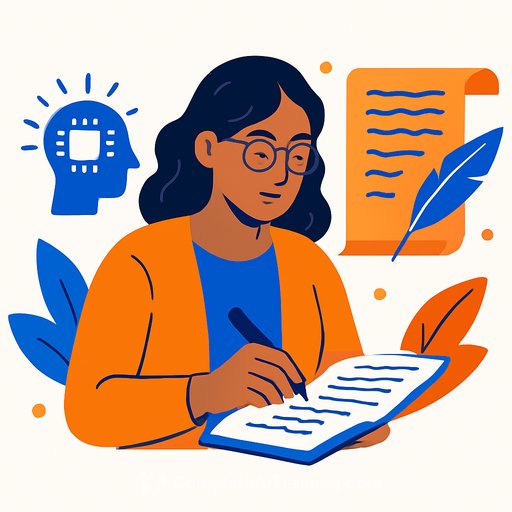"I love ChatGPT. It's fantastic." Boris Johnson on writing with AI - and what writers can learn
Former UK Prime Minister Boris Johnson says he uses ChatGPT while writing his books. He calls it "fantastic," and admits he asks it questions, gets instant feedback, and enjoys how it keeps the process moving.
Whether you agree with his politics or not, that single point matters if you write for a living: serious public figures are building with AI in the open. The question is how you'll use it without losing your voice or your standards.
The quote that caught writers' attention
"One thing that really encourages me is AI. I love AI. I love ChatGPT. I love it. ChatGPT is fantastic... I'm writing various books. I just use it. I just ask questions."
He also joked that ChatGPT flatters him. That's a good reminder: AI is helpful, but it will agree with you by default. You have to set the rules so it challenges you, not strokes your ego.
Context, in brief
- He praised Donald Trump's role in an Israel-Gaza deal and even floated the idea of a peace prize, while urging tougher pressure on Vladimir Putin.
- He wants the UK involved in rebuilding Gaza, without Hamas, and credited Tony Blair's efforts around the deal.
- He criticized Prime Minister Keir Starmer on policy and ethics, backed Kemi Badenoch's housing focus, and sees a tough path for Reform UK and Nigel Farage.
- On Ukraine, he argued for stronger action on oil sanctions and a future where Ukraine remains free and independent.
What writers can take from this
- Use AI as a thinking partner, not a ghostwriter. Let it speed research, outlines, and counterarguments. Keep the narrative and voice yours.
- Force disagreement. Ask the model to poke holes in your thesis. You'll get stronger drafts and fewer blind spots.
- Treat flattery as noise. Ask it to skip compliments and get straight to critique, structure, and sources.
- Keep your standards. Verify claims, cite sources, and polish prose with your ear, not the model's default tone.
A lean AI writing workflow
- Define the outcome: audience, promise, and one clear takeaway.
- Outline fast: ask for 3-5 structures, merge the best parts, cut the rest.
- Interrogate your idea: "List the strongest counterarguments and what evidence would change my mind."
- Research with intent: request sources, then cross-check them yourself.
- Draft in your voice: give a sample paragraph so tone stays consistent.
- Edit with constraints: "Cut 15% fluff. Keep cadence. Remove clichés. Preserve meaning." Then do a human pass.
Prompts you can steal
- "Outline five angles for a chapter on [topic] for [reader]. Include tension, promise, and a clean structure."
- "Challenge my thesis: [claim]. Give counterarguments, risk factors, and sources I should verify."
- "Turn these notes into a rough draft with clear section headers and open questions I need to answer: [paste]."
- "Rewrite this paragraph tighter (cut 20%) while keeping my voice: [paste]."
- "Identify statements in this draft that require citations and suggest credible references to check."
Guardrails that keep your integrity intact
- Originality: your ideas, your framing, your stories. Let AI help with structure and options.
- Verification: never pass unverified specifics as fact. Cross-check names, dates, stats.
- Voice: feed the model a sample of your writing and ask it to match cadence, not rewrite everything.
- Disclosure: follow client or publication policies on AI assistance.
- Privacy: don't paste confidential material into public models.
If you're building an AI-assisted writing stack
- Practical ChatGPT guides and workflows for writers who want speed without losing quality.
Use AI like a sharp editor sitting next to you: fast, blunt, and helpful. You set the taste and take responsibility for the final cut. That balance is where the good work lives.
Your membership also unlocks:






